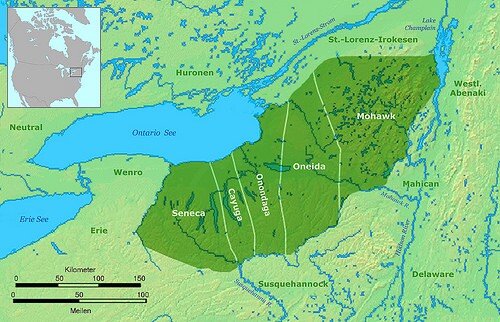
UNIVERSITY OF GEORGIA—An innovative study published today in the journal Science Advances demonstrates how decorations on ancient pottery can be used to discover new evidence for how groups interacted across large regions. The research, conducted by John P. Hart, Director of Research and Collections at the New York State Museum; Jennifer Birch, Assistant Professor at the University of Georgia; and Christian Gates St-Pierre, Assistant Professor at the University of Montreal, sheds new light on the importance of a little-understood Iroquoian population in upstate New York and its impact on relations between two emerging Native American political powers in the 16th century.
Iroquoians in northeastern North America are best known for the Haudenosaunee (Iroquois) and Wendat (Huron) confederacies in upstate New York and southern Ontario. There are extensive early historic records of both groups. Descendants of these confederacies and their respective nations that remain in these areas today have rich oral traditions that speak to their histories before and after European contact. Archaeology fills out these records through the excavation and analyses of ancestral communities.
Other Iroquoian groups did not persist and, for some, archaeology is the primary means of understanding their histories. One such group occupied the eastern end of Lake Ontario south of the head waters of the St. Lawrence River. Known by archaeologists as the Jefferson County Iroquoians, this group had abandoned their territory by the early 17th century. Archaeologists have pondered their “disappearance” for over a century, asking two primary questions, “why did they disperse” and “where did they go”? However, Hart, Birch and Gates St-Pierre ask a very different question, “what role did the Jefferson County Iroquoians play in Iroquoian social networks”?
Northern Iroquoians made pottery vessels with often complex geometrical decorations, which Hart and his colleagues suggest signaled membership in regional interaction networks. Using social network analysis with a statistic that measured the similarities of pottery decorations between sites, they demonstrate that the Jefferson County Iroquoians played a key role in regional interactions during the 16th century. As brokers between Iroquoian ancestral Haudenosaunee and Wendat groups, the Jefferson County Iroquoians were intermediaries in relationships between these groups. According to Birch, “by focusing on the connections between communities and regions, rather than a single scale of analysis, we are better able to understand how people’s everyday activities relate to the larger-scale social and political histories.”
After the Jefferson County population dispersed in the early 17th century, no other group took the place as “brokers” between Iroquoian people living in New York and Canada. The dispersal of Jefferson County populations effectively ended this brokerage function and may have contributed to the escalation of conflict between the Huron-Wendat and Iroquois confederacies. These results add to a growing literature on the use of network analyses with archaeological data and contribute new insights into processes of population relocation and geopolitical realignment, as well as the role of borderlands and frontiers in non-state societies.
This study is part of an ongoing effort by Hart and colleagues that employs social network analysis to better understand the relationships between Iroquoian populations in New York and Canada. According to Hart, “the past is a much more complex place than ordinarily considered. Our results highlight how our views of the past can be informed through the application of new methods and techniques.”
____________________________________
Tribal territory of Iroquois (Five Nations) in colonial times. Wikimedia Commons
____________________________________
Article Source: University of Georgia news release
________________________________________________
Receive 30 days free access to the popular new CuriosityStream lineup of documentaries on science, history, nature, and technology as a new Popular Archaeology premium subscriber.
___________________________________________
Travel and learn with Far Horizons.
____________________________________________
This richly illustrated issue includes the following stories: Recent findings shedding new light on the whereabouts of the remains of Philip of Macedon, father of Alexander the Great; how an archaeologist-sculptor is bringing bones of the dead back to life; archaeologists uncovering town life at the dawn of civilization; an exclusive interview with internationally acclaimed archaeologist James M. Adovasio about what makes the Meadowcroft Rockshelter prominent in the ongoing search for the first Americans; what archaeologists are finding at the site of the ancient city of Gath, the home town of the biblical Philistine giant, Goliath; and how scientists are redrawing the picture of human evolution in Europe. Find it on Amazon.com.






